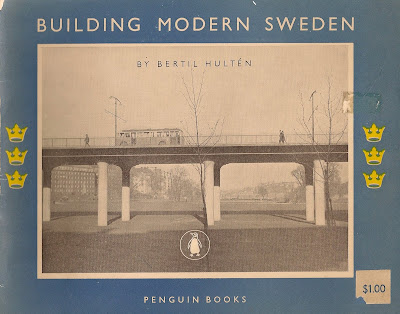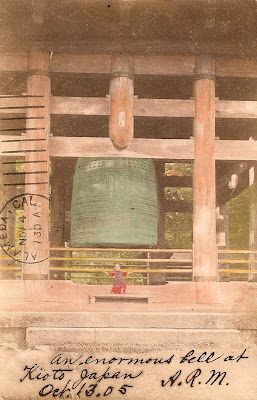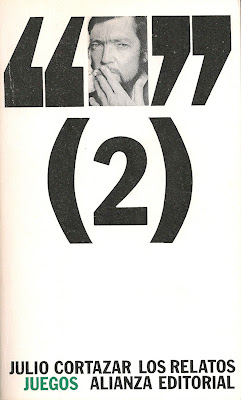A number of years ago I was invited to deliver a lecture at a summer conference on ethnobotany at the University of Tokyo. It was not my first visit to the country; I had been stationed there for two years shortly after the war, and had developed cordial relationships with a number of Japanese colleagues. Although I never learned to recognize more than a handful of
kanji, I became fairly conversant in the spoken language, thanks largely to the instruction of my informal mentor, the highly regarded scholar Professor S. Matuzaki, one of the most cultured men I have ever known and most certainly the kindest. It was at the behest of Professor Matuzaki, who had kept careful track of my scholarly achievements in the intervening years, that I had been invited, and in fact it was his extremely generous offer to serve as my host for the duration of the conference that had prompted my immediate acceptance.
I was met at the airport by the professor, now a widower in his seventies, and by his daughter, herself already both an accomplished agronomist and the mother of two small boys, and taken by taxi to the modest apartment of the daughter and her husband, which is where the professor, by then semi-retired, stayed during his frequent visits to Tokyo. Though the presence of an extra guest must have inconvenienced my hosts, they never gave the slightest sign that this was the case, and my week in their company remains one of my fondest memories.
The conference was, as these affairs nearly always are, a mixture of tedium, moments of intense intellectual exhilaration, and more or less constant social activity, and it is the last of these, more than anything else, which eventually wears one down. Fortunately, Professor Matuzaki's impeccable considerateness had extended to an offer to spend the week following the conclusion of the conference "recuperating" at his country house in Hyōgo Prefecture, not far from the Hatsuka River, an area of great historical and biological interest, which, though somewhat remote from Tokyo, was where the professor had spent most of his childhood. As a true scientist is never really off duty, this kind offer was made even sweeter by the prospect of being able to make some short excursions to investigate the cultivars and traditional agricultural practices of the region.
My host had become somewhat frail over the years since I had last seen him, and if he had ever learned to drive he had given it up with age, so after devoting an initial day to rest we were chauffered about for most of the week by a wiry local man, himself in his sixties, who did odd jobs and served as caretaker when the professor was away. In his light Toyota pickup truck we explored fertile river valleys and rugged foothills, taking in only those few temples and historic sites that Professor Matuzaki deemed absolutely indispensable for the visitor from abroad, but making ample use of the opportunity to meet with local farmers, examine wild relatives of local crop plants in their natural settings, and get an overview of the range of geology and soil types to be found in those parts.
On the fifth day, however, our driver had business of his own to attend to, and the professor suggested that I might enjoy taking a day hike on my own through the hills in the immediate vicinity of his home, which, because of their discontinuous terrain, had as yet been largely unscathed by development. He provided me with a hand-drawn map and a simple lunch prepared by his housekeeper, a woman who lived a few houses down the road, and pointed me off in the right direction. It was an overcast and fairly damp morning, and I brought along a light coat, but as I climbed away from the main road the exertion soon made this more of an encumbrance than anything else. I am a strong hiker, accustomed to vigorous outings, but I was glad that the professor had not sought to accompany me out of an excess of courtesy, as the trail was steep and in some places largely overgrown.
I reached the summit of the ridge marked on the map a little after noon, and from there walked along the heights for several miles. Though the sun never really broke through as the day wore on, the morning mist had cleared off and above the intervening canopy of forest I was able to see many hectares of neatly tended farmland in the distance. There were a few old cottages dotting the sides of the ridge, and at one point I caught sight of a section of sinuous highway not far off, but I met with no one. After a while I descended the far slope, and as I did so I must have misread the professor's map, for I soon found that, having thought it unnecessary for me to bring a compass and not having the sun to guide me, I was no longer sure in which direction I was heading. On an undulating piece of ground I came upon the remains of an old orchard. It's not in the character of the Japanese to neglect things that require attention nor to let good land go unused, but these trees had obviously gone untended for several years at least; the fruit, much of which lay rotting in thick clusters on the ground, was stunted and mealy, and the trunks were surrounded with a dense overgrowth of suckers and weeds. At the lower end of the slope the land turned sodden, and little runnels arose that made my footing tricky as I picked my way down to the orchard's lower edge.
I heard a trickle of water running ahead of me, and soon emerged on the rocky bank of a shallow stream a few yards wide. Though I probably could have waded through, the farther side appeared impenetrably marshy and choked with reeds, so I decided to turn and walk upstream along the near bank, where a path had been trodden out which, though muddy in spots, was easy enough to follow. Here and there patches of iris were in flower along the stream.
After hiking for an hour or more over increasingly difficult ground, I emerged into a little clearing on a ledge above the water, where smoke was drifting from the chimney of a single small stone hut or cottage roofed with thatch, of a style so primitive I was surprised to see it still in use outside of a museum village or the like. The door was open and when I stuck my head inside and uttered a tentative greeting in Japanese I'm afraid I startled the lone occupant, who quickly put down what she had been doing and rushed in some embarrassment to usher me in. She was one of the most peculiar looking women I had ever seen, though I can not honestly say that her appearance was unpleasant -- in fact, quite the opposite. Well under five feet tall, she wore a long, trailing kimono printed with a curious mottled red pattern the like of which I had never seen before. Her hair was tied up but largely hidden by an elaborately folded hat, of the same pattern as her kimono, which she wore low on her brow. Her eyes were small and dark and I quickly got the impression that she was either blind or at best could not see well. Her nose was delicate, but her mouth, which she seemed to barely open even when speaking, was unusually broad, though her lips were thin. I could not hazard a guess at her age, which might have been anywhere between twenty-five and fifty.
Once she had recovered from the surprise of my unexpected arrival, for which I of course apologized as best I could, she seemed positively delighted to see me. Her fingers were unusually slender but proved quite agile as she set about making her guest some tea and a hastily prepared meal, which I dared not refuse for fear of giving offense, though I still had the lunch the professor's housekeeper had provided me tucked away in my knapsack.
The cottage had a dirt floor and there was little furniture, only a pair of low three-legged stools, an ancient iron stove, and some small rustic wooden cabinets she used for storing food and sundries. It was evident that she customarily slept on mats on the floor, and I saw no sign that she had any substantial wardrobe other than what she was wearing. When she was done cooking she handed me a bowl with some sticky rice and a few bits of what I took to be smoked eel, which proved to be unexpectedly delicious, along with a cup of a rather bitter but flavorful and invigorating tea. She had accepted without evident curiosity my awkward attempt to explain who I was and why I had intruded on her privacy, and gave no sign of recognizing the name of the professor or the village near which he lived. She seemed, on the other hand, quite interested in the condition of the stream outside, and whether it had overrun its banks in the meadows across from the old orchard. I got the impression that, in spite of the language barrier, she was quite glad to have someone to chat with, and I suspected that it had been some weeks or months since she had been provided with a similar opportunity.
After we had finished our meal and she had poured us each another cup of tea, she seemed to grow more serious, lowering her voice to just above a whisper, and began to intone a long story of which I'm afraid I could not follow even half, though it appeared that she was relating some kind of onomastic folk legend about a young girl many centuries ago and about a stream which I gathered was the very one outside her door. Some parts of the story were evidently quite humorous, as she several times broke into laughter, but here and there the telling brought her nearly to tears with the heartbreak of it. Spellbound by her manner more than the matter of the tale, I did my best to react appropriately at the proper times. When the story was done she seemed pleased, fell silent, then looked down meditatively into her empty cup for a long while. I noticed that it had begun to rain.
The downpour lasted until well after nightfall, and by then there was no question of my setting out again that day. The woman seemed untroubled by this. She had a small oil lamp that provided a few moments of flickering light, but as this dwindled she arranged a mat for me on the floor not far away from her own. Like many country folk who have not yet been told that their ways are "backward," she seemed unconcerned that this arrangement might be regarded as indelicate. As the product of a less innocent world, I confess that for a few moments some ungentlemanly thoughts did cross my mind, but the combination of my upbringing and fatigue swiftly put them to rest.
I was awakened in the night, in total darkness, by the feverish impression of a pair of lips on my own. I reached up with my hands and felt the woman's kimono slip from her shoulders. Tiny fingers were deftly undoing the buttons of my shirt...
In the morning chill, as the first pale light began to filter under the door, I heard the woman rise and stoke the fire. For a while I heard her bustling with dishes and pots, then in my weariness I fell back to sleep. When at last I did get up there was no sign of her. She had left some rice and tea, still warm, beside the fire, but though I waited nearly until midday I never saw her again. Absurdly, I left my card propped up on one of the stools, though I knew she would be unable to read it.
I began to follow the trail downstream, confident that, even though I didn't know exactly where I was, I would be able to find my way back to the professor's house by retracing my steps of the previous day. I had only gone twenty yards or so, however, when I was brought up short. In front of me, on a low shelf of stone just above the water, lay a Japanese giant salamander. I had seen one of these extraordinary creatures, among the largest amphibians in the world, once before, in a Tokyo aquarium, but the specimen I beheld now, with its beautifully mottled, pinkish skin still wet from swimming, was much larger and at nearly five feet from nose to tail must have been fully grown. I cursed myself for not having thought to pack my camera.
The creature eyed me neutrally for a moment -- indeed its expressionless, almost featureless face was probably incapable of displaying emotion in any case -- and then slipped smoothly but unhurriedly into the water. It swam downstream past me a few yards while I watched, then, reversing its course and drawing close to the bank, lifted its head just above the water and seemed to incline it in my direction. I scarcely breathed until, after circling back and forth three or four times, it dove down into the muddy current and disappeared from sight forever.
Though they suffer, like many species, from the loss of their native habitat to the activities of man, these salamanders are carefully protected in Japan and their population appears for the time being to be fairly stable throughout much of their range, which is confined to the islands of Honshu, Shikoku, and Kyushu. (A closely related species in China, sadly, is critically endangered.) Possessing few natural enemies once they reach adulthood, individual specimens can live for decades -- perhaps nearly a century. They breed in August and September.
I made it back to Professor Matuzaki's house at around two o'clock in the afternoon; he had been concerned, but not greatly alarmed, by my failure to return the previous night. I am afraid that my inability to provide a full explanation of my activities during my absence caused one of the rare moments of awkwardness in my otherwise highly productive and enjoyable sojourn in his company.
















































